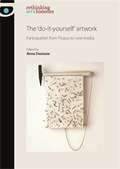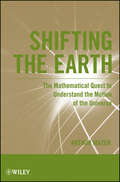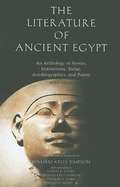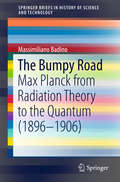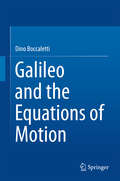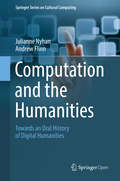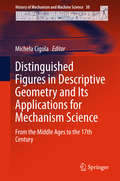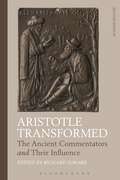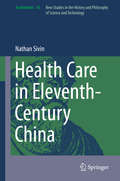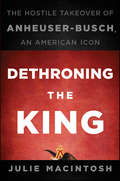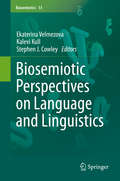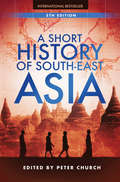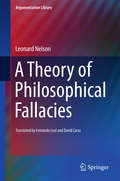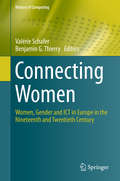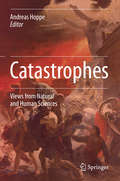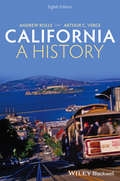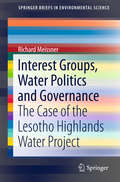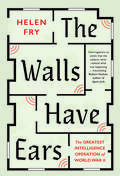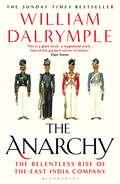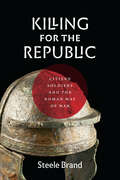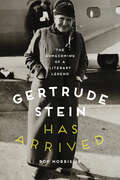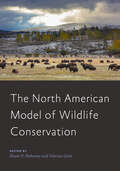- Table View
- List View
The 'Do-it-Yourself' Artwork: Participation from Fluxus to New Media (Rethinking Art's Histories) (PDF)
by Anna DezeuzeViewers of contemporary art are often invited to involve themselves actively in artworks, by entering installations, touching objects, performing instructions or clicking on interactive websites. Why have artists sought to engage spectators in these new forms of participation? In what ways does active participation affect the viewer’s experience and the status of the artwork? Spanning a range of practices including kinetic art, happenings, environments, performance, installations, relational and new media art from the 1950s to the present, this critical anthology sheds light on the history and specificity of artworks that only come to life when you – the viewer - are invited to ‘do it yourself.’ Rather than a specialist topic in the history of twentieth- and twenty-first century art, the ‘do-it-yourself’ artwork raises broader issues concerning the role of the viewer in art, the status of the artwork and the socio-political relations between art and its contexts.
Shifting the Earth: The Mathematical Quest to Understand the Motion of the Universe
by Arthur MazerDiscover how mathematics and science have propelled history From Ancient Greece to the Enlightenment and then on to modern times, Shifting the Earth: The Mathematical Quest to Understand the Motion of the Universe takes readers on a journey motivated by the desire to understand the universe and the motion of the heavens. The author presents a thought-provoking depiction of the sociopolitical environment in which some of the most prominent scientists in history lived and then provides a mathematical account of their contributions. From Eudoxus to Einstein, this fascinating book describes how, beginning in ancient times, pioneers in the sciences and mathematics have dramatically changed our vision of who we are as well as our place in the universe. Readers will discover how Ptolemy's geocentric model evolved into Kepler's heliocentric model, with Copernicus as the critical intermediary. The author explains how one scientific breakthrough set the stage for the next one, and he also places the scientists and their discoveries within the context of history, including: Archimedes, Apollonius, and the Punic Wars Ptolemy and the rise of Christianity Copernicus and the Renaissance Kepler and the Counter-Reformation Newton and the Enlightenment Einstein and the detonation of the atom bomb Each chapter presents the work of a single scientist or mathematician, building on the previous chapters to demonstrate the evolutionary process of discovery. Chapters begin with a narrative section and conclude with a mathematical presentation of one of the scientist's original works. Most of these mathematical presentations, including the section on Einstein's special relativity, are accessible using only basic mathematics; however, readers can skip the mathematical sections and still follow the evolution of science and mathematics. Shifting the Earth is an excellent book for anyone interested in the history of mathematics and how the quest to understand the motion of the heavens has influenced the broader history of humankind.
The Literature of Ancient Egypt: An Anthology of Stories, Instructions, Stelae, Autobiographies, and Poetry (Third Edition) (PDF)
by William Simpson Robert RitnerThe latest edition of this highly praised anthology of ancient Egyptian literature offers fresh translations of all the texts as well as some twenty-five new entries, including writings from the late literature of the Demotic period at the end of classical Egyptian history. The book also includes an extensive bibliography.
The Bumpy Road: Max Planck from Radiation Theory to the Quantum (1896-1906) (SpringerBriefs in History of Science and Technology)
by Massimiliano BadinoThis book examines the different areas of knowledge, traditions, and conceptual resources that contributed to the building of Max Planck’s theory of radiation. It presents an insightful comparative analysis that not only sheds light upon a fundamental chapter in the history of modern physics, but also enlarges our understanding of how theoreticians work.Coverage offers a deep investigation into the technical aspects behind the theory and extends in time the notion of quantum revolution. It also presents a full-fledged discussion of the combinatorial part of Planck’s theory and places emphasis on the epistemological role of mathematical practices. By painstakingly reconstructing both the electromagnetic and the combinatorial part of Planck’s black-body theory, the author shows how some apparently merely technical resources, such as the Fourier series, effectively contributed to shape the final form of Planck’s theory.For decades, historians have debated the conditions of possibility of Max Planck’s discovery as a paradigmatic example of scientific revolution. In particular, the use of combinatorics, which eventually paved the way for the introduction of the quantum hypothesis, has remained a puzzle for experts. This book presents a fresh perspective on this important debate that will appeal to historians and philosophers of science.
Galileo and the Equations of Motion
by Dino BoccalettiThis book is intended as a historical and critical study on the origin of the equations of motion as established in Newton's Principia. The central question that it aims to answer is whether it is indeed correct to ascribe to Galileo the inertia principle and the law of falling bodies. In order to accomplish this task, the study begins by considering theories on the motion of bodies from classical antiquity, and especially those of Aristotle. The theories developed during the Middle Ages and the Renaissance are then reviewed, with careful analysis of the contributions of, for example, the Merton and Parisian Schools and Galileo’s immediate predecessors, Tartaglia and Benedetti. Finally, Galileo’s work is examined in detail, starting from the early writings. Excerpts from individual works are presented, to allow the texts to speak for themselves, and then commented upon. The book provides historical evidence both for Galileo's dependence on his forerunners and for the major breakthroughs that he achieved. It will satisfy the curiosity of all who wish to know when and why certain laws have been credited to Galileo.
Computation and the Humanities: Towards an Oral History of Digital Humanities (Springer Series on Cultural Computing)
by Julianne Nyhan Andrew FlinnThis book addresses the application of computing to cultural heritage and the discipline of Digital Humanities that formed around it. Digital Humanities research is transforming how the Human record can be transmitted, shaped, understood, questioned and imagined and it has been ongoing for more than 70 years. However, we have no comprehensive histories of its research trajectory or its disciplinary development. The authors make a first contribution towards remedying this by uncovering, documenting, and analysing a number of the social, intellectual and creative processes that helped to shape this research from the 1950s until the present day.By taking an oral history approach, this book explores questions like, among others, researchers’ earliest memories of encountering computers and the factors that subsequently prompted them to use the computer in Humanities research.Computation and the Humanities will be an essential read for cultural and computing historians, digital humanists and those interested in developments like the digitisation of cultural heritage and artefacts. This book is open access under a CC BY-NC 2.5 license
Distinguished Figures in Descriptive Geometry and Its Applications for Mechanism Science: From the Middle Ages to the 17th Century (History of Mechanism and Machine Science #30)
by Michela CigolaThis book consists of chapters that focus specifically on single figures that worked on Descriptive Geometry and also in Mechanisms Sciences and contain biographical notes, a survey of their work and their achievements, together with a modern interpretation of their legacy.Since Vitruvius in ancient times, and with Brunelleschi in the Renaissance, the two disciplines began to share a common direction which, over the centuries, took shape through less well-known figures until the more recent times in which Gaspard Monge worked.Over the years, a gap has been created between Descriptive Geometry and Mechanism Science, which now appear to belong to different worlds. In reality, however, there is a very close relationship between the two disciplines, with a link based on extremely solid foundations. Without the theoretical foundations of Geometry it would not be possible to draw and design mechanical parts such as gears, while in Kinematics it would be less easy to design and predict the reciprocal movements of parts in a complex mechanical assembly.
Aristotle Transformed: The Ancient Commentators and Their Influence
by Richard SorabjiThis book brings together twenty articles giving a comprehensive view of the work of the Aristotelian commentators. First published in 1990, the collection is now brought up to date with a new introduction by Richard Sorabji. New generations of scholars will benefit from this reissuing of classic essays, including seminal works by major scholars, and the volume gives a comprehensive background to the work of the project on the Ancient Commentators on Aristotle, which has published over 100 volumes of translations since 1987 and has disseminated these crucial texts to scholars worldwide.The importance of the commentators is partly that they represent the thought and classroom teaching of the Aristotelian and Neoplatonist schools and partly that they provide a panorama of a thousand years of ancient Greek philosophy, revealing many original quotations from lost works. Even more significant is the profound influence – uncovered in some of the chapters of this book – that they exert on later philosophy, Islamic and Western. Not only did they preserve anti-Aristotelian material which helped inspire Medieval and Renaissance science, but they present Aristotle in a form that made him acceptable to the Christian church. It is not Aristotle, but Aristotle transformed and embedded in the philosophy of the commentators that so often lies behind the views of later thinkers.
Health Care in Eleventh-Century China (Archimedes #43)
by Nathan SivinBy examining all the prevalent varieties of therapy from self-care to religious ritual, this book explores health care practices in China, before modern times. In ancient China most people were unable to afford a doctor, even in the unlikely case that one lived near their village and was willing to treat peasants. What did they do when their children got sick? The answer is to be found in this book, which goes far beyond the history of medicine. The author uses methods of medical anthropology to explain the curative roles of popular religion, Daoism, Buddhism and the therapeutic rites performed by imperial officials. Readers will discover the steady interaction of religious healing and classical medicine in this culture. This highly readable book builds on over forty years of study and analysis of early liturgical and medical writings and a wide variety of other sources. Its focus on the eleventh century throws new light on a period of rapid transition in many aspects of therapy and it will appeal to scholars and general readers alike.
Dethroning the King: The Hostile Takeover of Anheuser-Busch, an American Icon
by Julie MacIntoshHow the King of Beers collapsed without a fight and what it means for America's place in the post-Recession world How did InBev, a Belgian company controlled by Brazilians, take over one of America's most beloved brands with scarcely a whimper of opposition? Chalk it up to perfect timing—and some unexpected help from powerful members of the Busch dynasty, the very family that had run the company for more than a century. In Dethroning the King, Julie MacIntosh, the award-winning financial journalist who led coverage of the takeover for the Financial Times, details how the drama that unfolded at Anheuser-Busch in 2008 went largely unreported as the world tumbled into a global economic crisis second only to the Great Depression. Today, as the dust settles, questions are being asked about how the "King of Beers" was so easily captured by a foreign corporation, and whether the company's fall mirrors America's dwindling financial and political dominance as a nation. Discusses how the takeover of Anheuser-Busch will be seen as a defining moment in U.S. business history Reveals the critical missteps taken by the Busch family and the Anheuser-Busch board Argues that Anheuser-Busch had a chance to save itself from InBev's clutches, but infighting and dysfunctionality behind the scenes forced it to capitulate From America's heartland to the European continent to Brazil, Dethroning the King is the ultimate corporate caper and a fascinating case study that's both wide reaching and profound.
Biosemiotic Perspectives on Language and Linguistics (Biosemiotics #13)
by Ekaterina Velmezova Kalevi Kull Stephen J. CowleyThe first international volume on the topic of biosemiotics and linguistics. It aims to establish a new relationship between linguistics and biology as based on shared semiotic foundation.
A Short History of South-East Asia
by Peter ChurchThe success of the first four editions shows that this book fills a vacuum for readers who wish to learn about the countries of South-East Asia. Recent years have seen a number of important developments all of which are covered here. With the global climate becoming more uncertain and the threat of terrorism spilling over, this book will aid readers' knowledge of this region by addressing its historical past and political future.
A Theory of Philosophical Fallacies (Argumentation Library #26)
by Leonard NelsonPresented as a Vorlesung in the German philosophical tradition, this book presents the most detailed account of Nelson’s method of argument analysis, celebrated by many luminaries such as Karl Popper. It was written in 1921 in opposition to the relativistic, subjectivistic and nihilistic tendencies of Nelson’s time. The book contains an exposition of a method that is a further development of Kant’s transcendental dialectics, followed by an application to the critical analysis of arguments by many famous thinkers, including Bentham, Mill, Poincaré, Leibniz, Hegel, Einstein, Bergson, Rickert, Simmel, Brentano, Stammler, Jellinek, Dingler, and Meinong. The book presents a general theory of philosophical argumentation as seen from the viewpoint of the typical fallacies committed by anybody arguing philosophically, whether professional philosophers or philosophical laypeople. Although the nature of philosophy and philosophical argumentation is one of the most recurrent objects of reflection for philosophers, this book represents the first attempt at a general theory of philosophical fallacy. According to Nelson, it is in the shape of false dilemmas that errors in reasoning always emerge, and false dilemmas are always the result of the same mechanism--the unwitting replacement of one concept for another.
Connecting Women: Women, Gender and ICT in Europe in the Nineteenth and Twentieth Century (History of Computing)
by Valérie Schafer Benjamin G. ThierryThis important volume examines European perspectives on the historical relations that women have maintained with information and communication technologies (ICTs), since the telegraph. Features: describes how gendered networks have formed around ICT since the late 19th Century; reviews the gendered issues revealed by the conflict between the actress Ms Sylviac and the French telephone administration in 1904, or by ‘feminine’ blogs; examines how gender representations, age categories, and uses of ICT interact and are mutually formed in children’s magazines; illuminates the participation of women in the early days of computing, through a case study on the Rothamsted Statistics Department; presents a comparative study of women in computing in France, Finland and the UK, revealing similar gender divisions within the ICT professions of these countries; discusses diversity interventions and the part that history could (and should) play to ensure women do not take second place in specific occupational sectors.
Catastrophes: Views from Natural and Human Sciences
by Andreas HoppeScientific disciplines have their own view on catastrophes. Here, natural scientists, engineers, physicians as well as historians and social scientists define and discuss geo-hazards and associated technical disasters, natural disasters as a business case, medicine and its catastrophes. After war aspects of the Shoah are described with Gershom Sholem´s Concept of Jewish Totality, and the situation of Displaced Persons in Germany as well as the Nakba for Palestinians related to the happiness of Jews celebrating their new State of Israel. The book also reminds of Hamburg’s Flood Disaster in 1962, the Great East Japan Earthquake in 2011 and other historical catastrophes in Japan, the Lisbon earthquake in 1755 and the Age of Enlightenment, and the eruption of the Tambora in 1815 followed by the “year without summer”.
California: A History
by Andrew Rolle Arthur C. VergeThe eighth edition of California: A History covers the entire scope of the history of the Golden State, from before first contact with Europeans through the present; an accessible and compelling narrative that comprises the stories of the many diverse peoples who have called, and currently do call, California home. Explores the latest developments relating to California’s immigration, energy, environment, and transportation concerns Features concise chapters and a narrative approach along with numerous maps, photographs, and new graphic features to facilitate student comprehension Offers illuminating insights into the significant events and people that shaped the lengthy and complex history of a state that has become synonymous with the American dream Includes discussion of recent – and uniquely Californian – social trends connecting Hollywood, social media, and Silicon Valley – and most recently "Silicon Beach"
Interest Groups, Water Politics and Governance: The Case of the Lesotho Highlands Water Project (SpringerBriefs in Environmental Science)
by Richard MeissnerThe book investigates the role interest groups have played over the years to influence the governments of Lesotho and South Africa, the World Bank and project implementation authorities in changing some policy aspects of the Lesotho Highlands Water Project (LHWP). Some of the issues being agitated by the interest groups are the resettlement of villagers where some of the dams for the projects are being constructed. The author argues that interest groups and individuals have the ability to influence the above-mentioned institutions and to such an extent that water politics and governance is not the domain of state institutions only.
The Walls Have Ears: The Greatest Intelligence Operation of World War II
by Helen FryA history of the elaborate and brilliantly sustained World War II intelligence operation by which Hitler’s generals were tricked into giving away vital Nazi secrets At the outbreak of World War II, MI6 spymaster Thomas Kendrick arrived at the Tower of London to set up a top secret operation: German prisoners’ cells were to be bugged and listeners installed behind the walls to record and transcribe their private conversations. This mission proved so effective that it would go on to be set up at three further sites—and provide the Allies with crucial insight into new technology being developed by the Nazis. In this astonishing history, Helen Fry uncovers the inner workings of the bugging operation. On arrival at stately-homes-turned-prisons like Trent Park, high-ranking German generals and commanders were given a "phony" interrogation, then treated as "guests," wined and dined at exclusive clubs, and encouraged to talk. And so it was that the Allies got access to some of Hitler’s most closely guarded secrets—and from those most entrusted to protect them.
The Anarchy: The Relentless Rise of the East India Company
by William DalrympleIn August 1765 the East India Company defeated the young Mughal emperor and forced him to establish in his richest provinces a new administration run by English merchants who collected taxes through means of a ruthless private army – what we would now call an act of involuntary privatisation.The East India Company's founding charter authorised it to 'wage war' and it had always used violence to gain its ends. But the creation of this new government marked the moment that the East India Company ceased to be a conventional international trading corporation dealing in silks and spices and became something much more unusual: an aggressive colonial power in the guise of a multinational business. In less than four decades it had trained up a security force of around 200,000 men – twice the size of the British army – and had subdued an entire subcontinent, conquering first Bengal and finally, in 1803, the Mughal capital of Delhi itself. The Company's reach stretched until almost all of India south of the Himalayas was effectively ruled from a boardroom in London.The Anarchy tells the remarkable story of how one of the world's most magnificent empires disintegrated and came to be replaced by a dangerously unregulated private company, based thousands of miles overseas in one small office, five windows wide, and answerable only to its distant shareholders. In his most ambitious and riveting book to date, William Dalrymple tells the story of the East India Company as it has never been told before, unfolding a timely cautionary tale of the first global corporate power.
Killing for the Republic: Citizen-Soldiers and the Roman Way of War
by Steele Brand"For who is so worthless or indolent as not to wish to know by what means and under what system of polity the Romans... succeeded in subjecting nearly the whole inhabited world to their sole government—a thing unique in history?"—PolybiusThe year 146 BC marked the brutal end to the Roman Republic's 118-year struggle for the western Mediterranean. Breaching the walls of their great enemy, Carthage, Roman troops slaughtered countless citizens, enslaved those who survived, and leveled the 700-year-old city. That same year in the east, Rome destroyed Corinth and subdued Greece. Over little more than a century, Rome's triumphant armies of citizen-soldiers had shocked the world by conquering all of its neighbors. How did armies made up of citizen-soldiers manage to pull off such a major triumph? And what made the republic so powerful? In Killing for the Republic, Steele Brand explains how Rome transformed average farmers into ambitious killers capable of conquering the entire Mediterranean. Rome instilled something violent and vicious in its soldiers, making them more effective than other empire builders. Unlike the Assyrians, Persians, and Macedonians, it fought with part-timers. Examining the relationship between the republican spirit and the citizen-soldier, Brand argues that Roman republican values and institutions prepared common men for the rigors and horrors of war. Brand reconstructs five separate battles—representative moments in Rome's constitutional and cultural evolution that saw its citizen-soldiers encounter the best warriors of the day, from marauding Gauls and the Alps-crossing Hannibal to the heirs of Alexander the Great. A sweeping political and cultural history, Killing for the Republic closes with a compelling argument in favor of resurrecting the citizen-soldier ideal in modern America.
Killing for the Republic: Citizen-Soldiers and the Roman Way of War
by Steele Brand"For who is so worthless or indolent as not to wish to know by what means and under what system of polity the Romans... succeeded in subjecting nearly the whole inhabited world to their sole government—a thing unique in history?"—PolybiusThe year 146 BC marked the brutal end to the Roman Republic's 118-year struggle for the western Mediterranean. Breaching the walls of their great enemy, Carthage, Roman troops slaughtered countless citizens, enslaved those who survived, and leveled the 700-year-old city. That same year in the east, Rome destroyed Corinth and subdued Greece. Over little more than a century, Rome's triumphant armies of citizen-soldiers had shocked the world by conquering all of its neighbors. How did armies made up of citizen-soldiers manage to pull off such a major triumph? And what made the republic so powerful? In Killing for the Republic, Steele Brand explains how Rome transformed average farmers into ambitious killers capable of conquering the entire Mediterranean. Rome instilled something violent and vicious in its soldiers, making them more effective than other empire builders. Unlike the Assyrians, Persians, and Macedonians, it fought with part-timers. Examining the relationship between the republican spirit and the citizen-soldier, Brand argues that Roman republican values and institutions prepared common men for the rigors and horrors of war. Brand reconstructs five separate battles—representative moments in Rome's constitutional and cultural evolution that saw its citizen-soldiers encounter the best warriors of the day, from marauding Gauls and the Alps-crossing Hannibal to the heirs of Alexander the Great. A sweeping political and cultural history, Killing for the Republic closes with a compelling argument in favor of resurrecting the citizen-soldier ideal in modern America.
Gertrude Stein Has Arrived: The Homecoming of a Literary Legend
by Roy MorrisIn 1933, experimental writer and longtime expatriate Gertrude Stein skyrocketed to overnight fame with the publication of an unlikely best seller, The Autobiography of Alice B. Toklas. Pantomiming the voice of her partner Alice, The Autobiography was actually Gertrude's work. But whoever the real author was, the uncharacteristically lucid and readable book won over the hearts of thousands of Americans, whose clamor to meet Gertrude and Alice in person convinced them to return to America for the first time in thirty years from their self-imposed exile in France. For more than six months, Gertrude and Alice crisscrossed America, from New England to California, from Minnesota to Texas, stopping at thirty-seven different cities along the way. They had tea with First Lady Eleanor Roosevelt, attended a star-studded dinner party at Charlie Chaplin's home in Beverly Hills, enjoyed fifty-yard-line seats at the annual Yale-Dartmouth football game, and rode along with a homicide detective through the streets of Chicago. They met with the Raven Society in Edgar Allan Poe's old room at the University of Virginia, toured notable Civil War battlefields, and ate Oysters Rockefeller for the first time at Antoine's Restaurant in New Orleans. Everywhere they went, they were treated like everyone's favorite maiden aunts—colorful, eccentric, and eminently quotable.In Gertrude Stein Has Arrived, noted literary biographer Roy Morris Jr. recounts with characteristic energy and wit the couple's rollicking tour, revealing how—much to their surprise—they rediscovered their American roots after three decades of living abroad. Entertaining and sympathetic, this clear-eyed account captures Gertrude Stein for the larger-than-life legend she was and shows the unique relationship she had with her indefatigable companion, Alice B. Toklas—the true power behind the throne.
Gertrude Stein Has Arrived: The Homecoming of a Literary Legend
by Roy MorrisIn 1933, experimental writer and longtime expatriate Gertrude Stein skyrocketed to overnight fame with the publication of an unlikely best seller, The Autobiography of Alice B. Toklas. Pantomiming the voice of her partner Alice, The Autobiography was actually Gertrude's work. But whoever the real author was, the uncharacteristically lucid and readable book won over the hearts of thousands of Americans, whose clamor to meet Gertrude and Alice in person convinced them to return to America for the first time in thirty years from their self-imposed exile in France. For more than six months, Gertrude and Alice crisscrossed America, from New England to California, from Minnesota to Texas, stopping at thirty-seven different cities along the way. They had tea with First Lady Eleanor Roosevelt, attended a star-studded dinner party at Charlie Chaplin's home in Beverly Hills, enjoyed fifty-yard-line seats at the annual Yale-Dartmouth football game, and rode along with a homicide detective through the streets of Chicago. They met with the Raven Society in Edgar Allan Poe's old room at the University of Virginia, toured notable Civil War battlefields, and ate Oysters Rockefeller for the first time at Antoine's Restaurant in New Orleans. Everywhere they went, they were treated like everyone's favorite maiden aunts—colorful, eccentric, and eminently quotable.In Gertrude Stein Has Arrived, noted literary biographer Roy Morris Jr. recounts with characteristic energy and wit the couple's rollicking tour, revealing how—much to their surprise—they rediscovered their American roots after three decades of living abroad. Entertaining and sympathetic, this clear-eyed account captures Gertrude Stein for the larger-than-life legend she was and shows the unique relationship she had with her indefatigable companion, Alice B. Toklas—the true power behind the throne.
The North American Model of Wildlife Conservation (Wildlife Management and Conservation)
by Shane P. Mahoney Valerius GeistAt the end of the nineteenth century, North America suffered a catastrophic loss of wildlife driven by unbridled resource extraction, market hunting, and unrelenting subsistence killing. This crisis led powerful political forces in the United States and Canada to collaborate in the hopes of reversing the process, not merely halting the extinctions but returning wildlife to abundance. While there was great understanding of how to manage wildlife in Europe, where wildlife management was an old, mature profession, Continental methods depended on social values often unacceptable to North Americans. Even Canada, a loyal colony of England, abandoned wildlife management as practiced in the mother country and joined forces with like-minded Americans to develop a revolutionary system of wildlife conservation. In time, and surviving the close scrutiny and hard ongoing debate of open, democratic societies, this series of conservation practices became known as the North American Model of Wildlife Conservation.In this book, editors Shane P. Mahoney and Valerius Geist, both leading authorities on the North American Model, bring together their expert colleagues to provide a comprehensive overview of the origins, achievements, and shortcomings of this highly successful conservation approach. This volume• reviews the emergence of conservation in late nineteenth–early twentieth century North America• provides detailed explorations of the Model's institutions, principles, laws, and policies• places the Model within ecological, cultural, and socioeconomic contexts• describes the many economic, social, and cultural benefits of wildlife restoration and management• addresses the Model's challenges and limitations while pointing to emerging opportunities for increasing inclusivity and optimizing implementationStudying the North American experience offers insight into how institutionalizing policies and laws while incentivizing citizen engagement can result in a resilient framework for conservation. Written for wildlife professionals, researchers, and students, this book explores the factors that helped fashion an enduring conservation system, one that has not only rescued, recovered, and sustainably utilized wildlife for over a century, but that has also advanced a significant economic driver and a greater scientific understanding of wildlife ecology.Contributors: Leonard A. Brennan, Rosie Cooney, James L. Cummins, Kathryn Frens, Valerius Geist, James R. Heffelfinger, David G. Hewitt, Paul R. Krausman, Shane P. Mahoney, John F. Organ, James Peek, William Porter, John Sandlos, James A. Schaefer
The North American Model of Wildlife Conservation (Wildlife Management and Conservation)
by Shane P. Mahoney Valerius GeistAt the end of the nineteenth century, North America suffered a catastrophic loss of wildlife driven by unbridled resource extraction, market hunting, and unrelenting subsistence killing. This crisis led powerful political forces in the United States and Canada to collaborate in the hopes of reversing the process, not merely halting the extinctions but returning wildlife to abundance. While there was great understanding of how to manage wildlife in Europe, where wildlife management was an old, mature profession, Continental methods depended on social values often unacceptable to North Americans. Even Canada, a loyal colony of England, abandoned wildlife management as practiced in the mother country and joined forces with like-minded Americans to develop a revolutionary system of wildlife conservation. In time, and surviving the close scrutiny and hard ongoing debate of open, democratic societies, this series of conservation practices became known as the North American Model of Wildlife Conservation.In this book, editors Shane P. Mahoney and Valerius Geist, both leading authorities on the North American Model, bring together their expert colleagues to provide a comprehensive overview of the origins, achievements, and shortcomings of this highly successful conservation approach. This volume• reviews the emergence of conservation in late nineteenth–early twentieth century North America• provides detailed explorations of the Model's institutions, principles, laws, and policies• places the Model within ecological, cultural, and socioeconomic contexts• describes the many economic, social, and cultural benefits of wildlife restoration and management• addresses the Model's challenges and limitations while pointing to emerging opportunities for increasing inclusivity and optimizing implementationStudying the North American experience offers insight into how institutionalizing policies and laws while incentivizing citizen engagement can result in a resilient framework for conservation. Written for wildlife professionals, researchers, and students, this book explores the factors that helped fashion an enduring conservation system, one that has not only rescued, recovered, and sustainably utilized wildlife for over a century, but that has also advanced a significant economic driver and a greater scientific understanding of wildlife ecology.Contributors: Leonard A. Brennan, Rosie Cooney, James L. Cummins, Kathryn Frens, Valerius Geist, James R. Heffelfinger, David G. Hewitt, Paul R. Krausman, Shane P. Mahoney, John F. Organ, James Peek, William Porter, John Sandlos, James A. Schaefer
